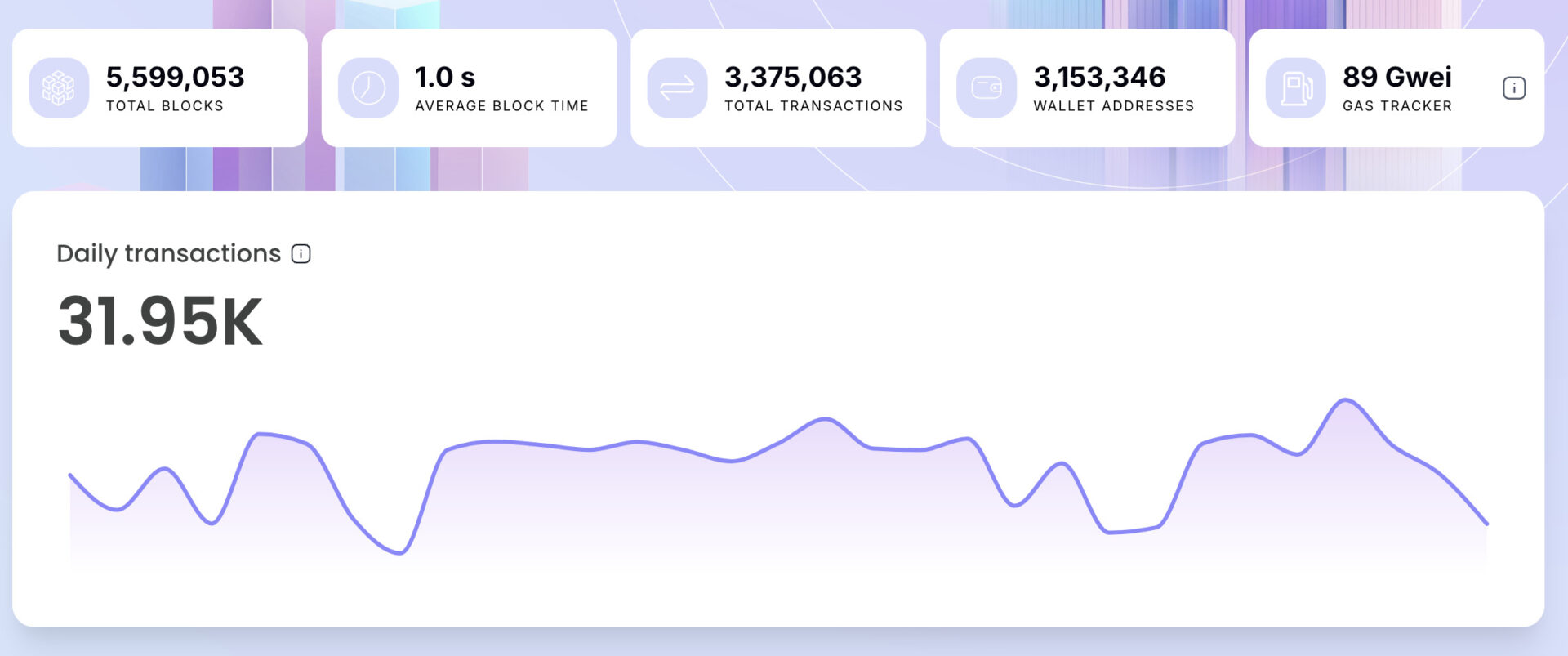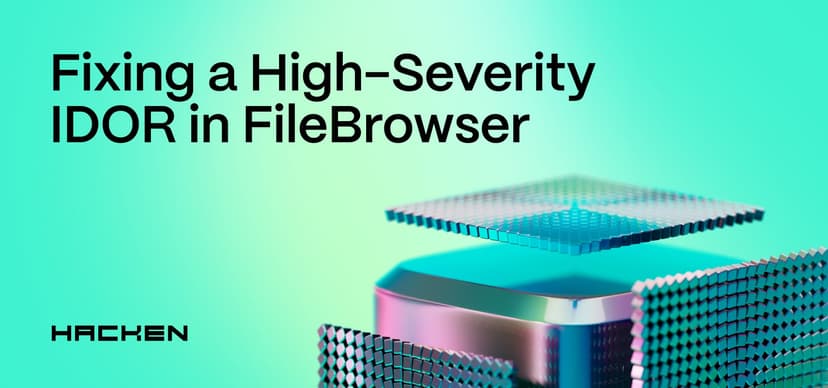Overview
PhronAI, a pioneering Layer-1 blockchain, merges EVM compatibility, Proof-of-Stake, and AI-driven consensus mechanisms to create a robust and scalable platform at the forefront of AI and blockchain integration. Specifically, it integrates advanced AI capabilities at its foundational Layer 0 to revolutionize the landscape of distributed ledger systems. With an average block time of just over one second and nearly a million transactions processed, PhronAI is rapidly expanding its ecosystem. To ensure its infrastructure remains secure and efficient, PhronAI has partnered with Hacken, a trusted blockchain security auditor, to conduct Blockchain Protocol Audit and Tokenomics Audit.

This case study explores how Hacken's comprehensive suite of cybersecurity services has been instrumental in securing PhronAI’s protocol and tokenomics, ultimately reinforcing PhronAI's commitment to security for its community, investors, and users.
PhronAI’s Security Standpoint
PhronAI's dedication to security is evident in its multifaceted approach to safeguarding its platform. This commitment encompasses a thorough protocol audit and in-depth tokenomics review. These initiatives protect against vulnerabilities while ensuring the integrity and reliability of PhronAI’s AI-driven consensus and transaction processing systems.
Blockchain Protocol Audit
Hacken conducted a comprehensive audit of PhronAI’s protocol, focusing on its AI-enhanced consensus mechanism, the Sophia Protocol. The protocol leverages machine learning to optimize network parameters in real time, enhancing transaction throughput while maintaining high security standards. Hacken's audit identified several areas for improvement, particularly related to potential vulnerabilities in the AI-driven modules and the consensus algorithm.
Medium and Low Severity Findings:
- State Corruption Due to Index Out of Bounds in Aura Pallet: A vulnerability was identified in the Aura Pallet, where improper handling of state variables could lead to state corruption. This issue was resolved by implementing length validation for state variables.
- Inconsistent Range Bounds in Aura Pallet: The audit revealed that unsorted state array values could lead to denial of service (DoS) attacks. Hacken recommended and implemented validation checks to ensure the integrity of the range bounds.
- Resource Exhaustion Vulnerability in h2 Crate: Although this vulnerability could lead to DoS attacks, it was deemed to have a low impact on core functionality. Hacken suggested monitoring systems to mitigate potential risks.
- Multiple Issues in shlex Crate's Quote API: Hacken identified several issues that could lead to arbitrary command execution, recommending an upgrade to mitigate these risks.
- Unmaintained Dependencies: Several crates used in PhronAI’s protocol were found to be unmaintained, posing potential security risks. Hacken advised migrating to more actively maintained alternatives.
All issues were resolved or mitigated following Hacken's recommendations. The protocol audit confirmed PhronAI's protocol resilience, and the thorough testing and remediation significantly enhanced its blockchain security.
Tokenomics Audit
In addition to the protocol audit, Hacken played a pivotal role in designing and auditing PhronAI’s tokenomics model to ensure it is robust, efficient, and capable of sustaining long-term growth. This audit assessed the security of the staking mechanisms, the deflationary model through transaction fee burns, and the dynamic gas fee structures inspired by Ethereum’s EIP-1559. Hacken’s audit confirmed the robustness of these mechanisms, ensuring that PhronAI's tokenomics model supports a sustainable and secure ecosystem.
Close Lool At PhronAI’s Tokenomics
PhronAI’s tokenomics model is meticulously crafted to balance the ecosystem’s sustainability, user incentives, and long-term growth. A critical component of this model is the deflationary mechanism, which integrates transaction fee burns and AI service fee burns to gradually reduce the total token supply over time. This deflationary approach not only helps stabilize the value of the Phron token but also aligns the economic incentives of participants with the overall health and longevity of the ecosystem. By reducing the available token supply, PhronAI fosters an environment where token holders are incentivized to actively participate in the network, thereby promoting a healthy, thriving community.
To validate these design choices, Hacken conducted rigorous chain and economic simulations. The simulations focused on evaluating the network’s ability to manage and distribute its transaction processing capacity across multiple Layer 1 projects running concurrently. By mirroring realistic operational conditions, these simulations confirmed the Layer 0 network’s capacity to support a multi-faceted blockchain ecosystem. The results highlighted the network’s robustness and adaptability, ensuring that PhronAI can maintain high performance even under varying demand scenarios.
The tokenomics framework also incorporates a dynamic gas fee model inspired by Ethereum’s EIP-1559, which adjusts fees based on network demand. Hacken’s simulations of gas fees captured the computational and storage demands of various dApp types, providing insights into the costs associated with on-chain activity. This model ensures that the cost of transactions remains fair and reflective of current network conditions, optimizing user experience while maintaining the network's efficiency. Furthermore, the economic simulations demonstrated the potential for significant price appreciation, even under conservative metrics, highlighting the robustness and growth potential of PhronAI’s tokenomics
Results
This collaboration yielded several critical outcomes:
- Trust: The tokenomics audit reinforced community trust by demonstrating the security and viability of PhronAI’s token economy.
- Confirmation: Hacken's involvement confirmed that the tokenomics model is not only secure but also positioned for sustainable growth.
- Solid Fundamentals for Future Growth: The audit laid the groundwork for PhronAI’s continued expansion, ensuring that its economic model could support the platform's ambitions.
The culmination of this work is detailed in PhronAI’s Tokenomics Paper, available here.
Strategic Partnership and Expansion
🤝 We’re partnering with @Phron_ai, a Layer-1 blockchain that blends EVM compatibility, Proof-of-Stake, and AI-driven Consensus
— Hacken🇺🇦 (@hackenclub) August 13, 2024
This collaboration brings special deals on our security services, priority queue access, and an extended trial of @HackenProof’s triage service for… pic.twitter.com/qBkJVVKhin
PhronAI is expanding partnerships in AI Web3, including DePIN and AI compute, to strengthen its leadership in AI-integrated blockchain technology. To support this, PhronAI has partnered with Hacken as the recommended security auditor for all ecosystem projects. Hacken’s ongoing support includes providing priority access to security services, special deals, and an extended trial of HackenProof Triage. This comprehensive support ensures that all projects within the PhronAI ecosystem have the tools and guidance necessary to maintain high-security standards.
Highlights of the Audit
The technical details of PhronAI’s protocol and tokenomics audit reveal several key areas of focus:
- AI-Driven Consensus: Hacken evaluated the Sophia Protocol's ability to autonomously detect and mitigate security threats. The audit ensured that the AI algorithms governing consensus adjustments were secure and resistant to manipulation.
- Staking and Validator Incentives: The audit assessed the Adaptive AI Staking (AAIS) model, which dynamically adjusts staking parameters based on real-time network conditions. Hacken verified that this model supports a secure and fair reward distribution while maintaining network stability.
- Deflationary Mechanisms: Hacken confirmed the effectiveness of PhronAI's deflationary model, which includes transaction fee burns and AI service fee burns, as a means to reduce token supply and stabilize the ecosystem.
These technical highlights underscore the depth of Hacken’s audit process and its role in ensuring that PhronAI’s innovative technologies are both secure and sustainable. These are crucial steps leading up to major milestones in PhronAI's development, such as the Layer 1 Mainnet launch and the $PHRON token release.
Conclusion
PhronAI’s innovative approach to blockchain technology, which integrates AI to enhance decentralization, security, and scalability, sets it apart in the AI Web3 space. With Hacken’s cybersecurity services safeguarding its protocol, tokenomics, and ecosystem, PhronAI is well-positioned to achieve its vision of creating a secure and scalable blockchain platform that leverages AI's full potential.
As PhronAI continues to expand its partnerships and ecosystem, Hacken will remain a committed security partner, providing the necessary expertise to ensure that PhronAI’s infrastructure and ecosystem projects remain resilient against emerging threats. Together, PhronAI and Hacken are setting new standards for security in the AI-driven blockchain space.



